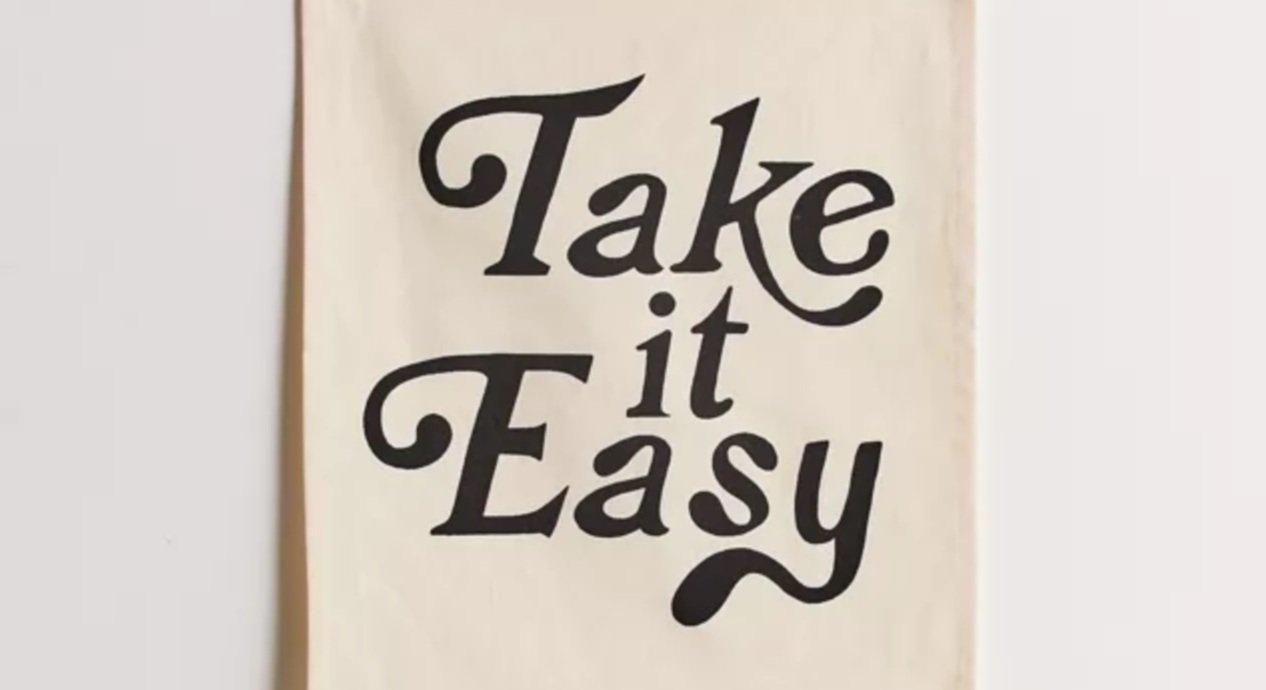The dark-humored side of grief, with Karen Kilgariff
Karen Kilgariff, a writer and comedian most recently known for co-hosting the podcast My Favorite Murder, lost her mom to Alzheimers in 2016 after a 12-year battle and shares about it in a podcast.
Photo: John Towner
Karen Kilgariff, a writer and comedian most recently known for co-hosting the podcast My Favorite Murder, lost her mom to Alzheimers in 2016 after a 12-year battle. She shares about her experience in a podcast conversation with her friend Chris Garcia. You can listen to the full episode below.
Later in the episode, she shares about how she and her sister navigated their mom’s disease and some of the sisterly dark humor that emerged amid the tragic circumstances. The clip starts around the 17:00 and goes until 19:15. It’s also transcribed below.
Karen: [My sister and I] talk to each other pretty much every day, and she's my best friend. But during my mom being sick there was just so much tension and there's so much anxiety and — there was so much to manage at one time, and as we lost my mom more and more we would tell each other.
Like the first time I had the experience where I was trying to put mom to bed and she fought me and I yelled at her and then I scared her and she kind of went like, "I'm sorry. I'm sorry," and apologized to me, and then I couldn't stop crying because it was so awful.
[Laughs] This is like gallows humor, like crazy. But one night my sister came to get me and that had happened and it was really bad and I had to tell my sister because I felt like I'd done that so badly and that was like I yelled at our sick mom - what's wrong with me? [Laughs]
And my sister goes, "Are you fucking kidding me? I do it every time."
And I was like, "Wait, what?!"
She goes, "She drives you crazy! Of course you yell at her." And I was like, l felt like I was like borderline elder abuse, how mad I got.
And she goes, "Yeah, she makes you that mad. That what we're all doing all the time."
Then I said, in the middle of really bad sobbing, I just go, "I just want her to die.” I said it so dramatically of like, can you believe I'm even saying this?
And my sister goes ,"Oh please, you don't think I think about spiking her shit with Abilify every time I go over there?"
[…] In the middle of crying she said that and then we both were laughing so hard, where it's like…this is a nightmare. [Laughs]
The full transcript of the podcast episode can be found here.
Beautiful advice on caring for grieving friends
On a recent episode the We Can Do Hard Things podcast, author and cancer survivor Kate Bowler joined to share her story and helped respond to listener questions about grief.
Photo: Allison Wopata
On a recent episode of Glennon Doyle’s podcast, We Can Do Hard Things, author and cancer survivor Kate Bowler joined to share her story and helped respond to listener questions about grief. The episode is cry-in-your-car beautiful. One listener question and Kate’s subsequent response really stood out.
The listener asked how to help someone going through an incomprehensible loss, especially when you’ve never experienced a loss of that magnitude. Kate’s answer is below.
Kate Bowler: What a thoughtful question. How can I bubble wrap somebody whose pain is unimaginable to me and I’m so scared of doing it wrong?
I mean, I feel scared of doing it wrong all the time. And yet, I know it’s only because people were willing to embarrass themselves to try. That I got the community that I needed.
And I guess, maybe the first thing to always remember is that the person who is suffering doesn’t know what they need, because their needs are going to change all the time. That it is okay to offer things that they don’t need or want and be turned down. And then try again with something else, like inviting them to things that you worry will be painful for them. You don’t know and they don’t know either. It is always good. It is always good just to offer it, but offer it lightly.
It is always good to like, food and gift cards and just a thoughtful card that says, “I’m thinking about you.” But, it’s also good. Maybe just as the friend or as the community to have a moment where you’re like, “What’s my best thing?” Am I like the firefighter friend, who’s kind of good at rushing in at first and can boss and redirect traffic? Am I actually more of the loving presence person, where I’m actually better in the long game? Where I can send… One of my favorite kinds of people, is the person that doesn’t forget. Who writes down an anniversary and then puts it in the calendar a year from now and just says, “Write a thoughtful card that says, I’m thinking of you during this hard season, sending you so much love.” And maybe, also this cheesecake gift card.
I mean, everybody has their thing. And if your thing is presence, great. Presence. If your thing is funny texts, great. But like, nobody really expects you to know what to do. Because they have no idea what they’re doing and their grief will evolve over time. But just being the person who keeps showing up and taking cues.
And if you can’t help the main person, help the helpers. Help the caregivers in their life, those people don’t get nearly enough of what they need. So you don’t have to muscle your way into the very center. You can love that second tier or that third tier. And everybody is lifted by that kind of love.
Kate Bowler is a writer and cancer surviver. She has written multiple books on grief, including Everything Happens for a Reason: And Other Lies I’ve Loved.
The power of rest
Especially in grief, prioritizing rest is vital to wellbeing.
Often in our busy world, there is pressure to go nonstop. We pack our schedules, we over-commit, we power through. In a culture that values productivity, taking a break can sometimes feel bad - even wrong - but the truth is that prioritizing rest is vital to our wellbeing.
Have you ever heard the phrase “rest and digest”? This phrase is used to describe the state when the parasympathetic nervous system is engaged. It’s the state when we are physically calm - our stress hormones (cortisol) are reduced, our heart rate is normal, our digestion is stabilized. It’s the opposite of the sympathetic nervous system, which we commonly know as the feeling of fight or flight, a heightened state brought on with stress. We want to spend as much time as we can in the Rest & Digest state, but it can be a challenge in our modern world. Stress can come in many different forms too - the Holmes-Rahe Stress Inventory includes a range of common life stressors that you might not even realize are stressful, from getting a parking ticket to getting a promotion to vacation. It’s important to acknowledge the many small stressors in our daily lives because they can all contribute to a constant underlying state of unrest.
Unsurprisingly, loss has a high stress score on the Holmes-Rahe scale. Grief not only brings about sadness but it also comes with stress. Rest can feel extra-challenging for some in grief because it’s often the time when feelings emerge, and that can feel overwhelming. We may use busyness to avoid the big feelings, but in doing so we are also avoiding an opportunity for our bodies to come down from the cortisol rush, which can leave us feeling more exhausted and emotionally bottled. This can sometimes lead to an even bigger crash later.
Of course, coping through busyness and avoidance is not altogether unhealthy. Grief is hard. Sometimes we just want to push the hard feelings away, and that’s okay. But because grief is hard, it’s important to also prioritize taking care of yourself, and rest is a critical part of that equation.
Rest can come in many forms. It can be as simple as a ten-minute break to do some deep breathing or stretching. It can be sipping coffee quietly alone or jotting a few notes in a journal. It can be taking a bath or a nap. In moments of rest, think about slowing down your breath and feeling your feet on the ground. Relax your shoulders. Put your hand on your heart and feel it beating. Even for a few moments, slow down.
You are doing the hardest work.
Six pieces of highly autobiographical bereavement advice
Creative writing piece, originally posted by Mae Rice on McSweeny’s, September 26, 2012
Originally posted by Mae Rice on McSweeny’s, September 26, 2012
1. What to Do When Your Mom’s Death Certificate Incorrectly Lists Her as Chicano
“My god, how embarrassing that we would mistake her for Chicano,” the lady at the funeral home will say, in a way that suggests she either hates Chicano people or thinks you do. You will want to clarify that this is not about Chicano people being famously awful, or famously immortal, but just about accurate government records. Even if you tell her you are a Chicano supremacist, though, she will keep muttering “Chicano” to herself like a remorseful house elf. Let it go.
2. How to Tell People Your Mom Died
You will sometimes want to minimize the problem by comparing it to more serious problems, as in, “She died, but at least apartheid is over.” Other times, you will want to downplay the news via hesitant questions—“I think my mom is like… dead?”—which can elicit responses such as, “Have you tried calling her cell phone?” Even when you send a group email to your closest friends, announcing her death, you might sign off with, “Thanks for your support during this shitshow,” because “shitshow” is a fun, casual word for a fun, casual death. It is better to tell people in a simple, declarative sentence, though.
3. How to Find an Outfit For Your Mom’s Service
You will buy a black sheath dress that hits above the knee, and you and your dad will wonder whether it is slutty. Your mom would know, but you are too young to have been to many funerals, and your dad only knows about fashions from the men’s department at Costco. You will call your friend Alice for a second opinion, which is actually a first opinion because you and your dad shared the non-opinion of “huh.” You will eventually return the sheath, to be safe; ideally, you will replace it with a knee-length skirt.
At your mom’s service, a single-file line of people will hug you and whisper, “I’m sorry for your loss,” until you reach Alice’s mom. She will instead whisper, “You don’t look slutty at all!” Although you are at a memorial service, you should feel free to high-five her. She is awesome.
4. What to Do With Your Mom’s Ceramic Birds
Loving your mom and loving the tiny ceramic birds she ordered online from her hospital bed are two separate things. This is especially true of the last one she ordered, which will arrive in the mail after her death. It will be roughly the size of a golf ball, and it will be glued to a hairclip.
Do not incorporate the surprisingly heavy bird into your only hairstyle (a look somewhere in between “bedhead” and “meth user”). You can just give the bird to your friend’s dog with bangs. It will look very festive on the dog.
5. What to Do When You Want to Play the Dead Mom Card
Don’t. Playing the dead mom card to win an argument—unless the argument is about what your mom has been up to lately—is like playing the Hitler card. There is always a gentler way. When you want to say “omelets were Hitler’s favorite food,” or “my mom liked omelets, and then she died,” just say what you mean. You don’t want an omelet.
6. What to Do When It is Mother’s Day
You will worry that people will approach you on the street—because you are not with your mom or on the phone saying, "You are my mom!”—to heckle you. “No mom today, huh?” and “What day do you think it is, Labor Day?” and “Cat got your mom?” are all questions you will have nightmares about. Luckily, people never say these things. You can go outside on Mother’s Day. It will be fine.
3 Therapy Apps
Thanks to advances in technology, therapy is a lot more accessible these days, so if you can’t get to an in-person therapist or if you prefer connecting with one remotely, there are options. We’ve rounded up a few of the top therapy apps and their costs below.
Photo: Birxi
Individual therapy can be a really helpful tool during the grief process. Having an objective and professional point of view can provide perspective while sorting through all the different feelings that come along with grief. Thanks to advances in technology, therapy is a lot more accessible these days, so if you can’t get to an in-person therapist or if you prefer connecting with one remotely, there are options. We’ve rounded up a few of the top therapy apps and their costs below. If you’ve tried any of the apps or if you have other favorites, feel free to respond in the comments.
Please note that therapists are generally not able to diagnose or prescribe over the platform.
Talkspace
Talkspace has a variety of different plans available based on the type of therapy you’re looking for. There are options for live video therapy, text messaging with your therapist, and audio. You get to choose your therapist from a hand-narrowed list, all with the highest clinical license in their state of practice, plus 3+ years of clinical experience. The cost ranges from $65-$99 a week, billed monthly (depending on the plan you choose). Talkspace is in network through EAP and health insurers, so be sure to check with your insurance company to see if you’re covered or if your employer offers the platform as an employee benefit.
BetterHelp
On BetterHelp, users are matched with an experienced therapist (3+ years) after taking a questionnaire, and you can do live video sessions, phone sessions, texting, or live chats with the assigned counselor. Users can choose to remain anonymous if they prefer to preserve their privacy. BetterHelp does not work with insurance companies or employers, but there are flexible cost packages ranging from $40-$70 billed weekly, and you can cancel your payment at any time.
Larkr
Larkr offers video talk therapy. The app matches you with a therapist based on the info you provide, but you can choose whichever time zone works best for your schedule. In between video sessions you can contact your therapist in the app, and there are also other individual tools for mood tracking and journaling. The cost is $85 a session, no subscription or commitment. For cooperating insurance, you can submit to your insurance company for reimbursement.
Tips for writing a condolence note
Writing condolence notes isn’t something most of us do on a regular basis - maybe some are totally new to it - and it can be challenging to know what to say or where to begin.
When someone experiences a loss, a good way to show support is to send a condolence note. It’s a relatively low effort and low cost way of showing someone that you care and acknowledging the loss they’ve experienced. But writing condolence notes isn’t something most of us do on a regular basis - maybe some are totally new to it - and it can be challenging to know what to say or where to begin. So, here are some tips to get you started. Feel free to comment for any I missed!
1. Don’t hesitate.
There’s a common misconception that sending a card will be intrusive or will just make the recipient sadder. I’ve even heard people say, “I don’t know her that well, would it be weird if I sent her a card?” The answer is no. When I lost my dad, I received notes from two high school classmates I barely knew - they were in other friend groups, and it had been a year since we’d graduated. I still remember those notes vividly, and I felt a huge sense of comfort from them. They were some of the only notes I received from people my age, including friends. It feels good, not weird, to be acknowledged when something big happens in your life; it’s weirder when people don’t acknowledge it. And trust me - any sadness the recipient feels isn’t brought on by your letter, it’s just there, a natural part of the grieving process. So don’t worry. And even if you do feel a little weird, just remember that the momentary discomfort you feel in writing will yield something that could be meaningful to the recipient for the rest of their life.
2. The format isn’t that important*.
A plain card is fine, as is a card from the condolence section of the drugstore (just make sure you pre-read any quotes or words on the front or interior before you buy just in case there are sentiments you don’t agree with). My go-to is usually a standard card with a minimally patterned front (nothing too bright or “fun”) and a blank interior, which allows enough space for several lines of text in my own words. In the digital age, e-cards and email are also good options. This also works as a fallback if you don’t have a way to get their mailing address (it’s best not to ask them directly for their email or mailing address - instead, check with others who know them; this will be the easiest way not to pile on additional tasks). My personal preference is always a tangible card because it lasts longer, but a well crafted email can be nice too.
* Except texts. I say, avoid texts.
3. Some clichés are okay.
If creative writing isn’t your forte, phrases like “I’m sorry for your loss” and “You’re in my thoughts” are totally acceptable. They’re short and sweet and convey your support. You can also say things like “I’m here for you” especially if you can provide them help in the future, whether it’s a coffee chat or an errand, etc (see more below). But I recommend avoiding phrases like “we’re never given more than we can handle” or “You’ll get through this” or even “You’re strong” because while the intent of these messages may be to lift up your bereaved friend, they dismiss the heaviness of the current moment. Saying this to someone who’s just experienced a loss can minimize their experience and feel more like you’re saying “get over it.” If you feel that these sentiments are important to share, save them for a later time when emotions aren’t as raw and they could be reassuring.
4. When in doubt, make it about them.
Sometimes it can be tempting, especially if you’ve experienced loss, to go beyond the typical condolence phrases and try to relate to the grieving person through your now-shared experience. You may want to offer a perspective or advice based on that, but tread lightly. Sometimes sharing about your own experience can make it more about you than them. The best way to determine which side of that line you might be on is to ask yourself what your intention is - if it's to say "Hey I've been through that too" or "I know how you feel", steer clear - those are about you. If you say, "Losing a sibling is like losing a part of you, and I'm deeply sorry that you're going through that." That provides a nod to your experience but doesn't under
If you don't have personal experience with loss that can be applied here, that's okay. Maybe you have a memory or anecdote you can include about the person they’ve lost. Some of the letters I cherished after my dad died were those with personal stories from friends and colleagues. They felt like little windows into his past, each revealing another side of him I didn't know. If you never met the person your friend has lost, you could say something like “I remember the story you told me about the time your mom took you out of school for ice cream. She must have been a very special person to you.”
5. Be specific.
When it comes to saying things like "I'm here for you" or "I'm around if you need anything" it's better to be more specific. How would you plan to be there for that person? Are you willing to run errands? Are you available to be a listener when they need someone to talk to? Including an example can be helpful and takes some of the burden off of them. When someone is in the midst of grieving, it can be an overwhelming time. Especially if the loss was someone close to them, there are often a lot of logistics to sort through. Offering to take a task or two off that list or finding tasks that can ease their everyday will help alleviate the overwhelm. Some examples include: dropping off a meal or snacks for them on their schedule (ideally a few weeks after the initial spike of meals others bring), helping with errands like dry-cleaning or (if you know them well enough) childcare or walking their dog, and offering to pick up coffee from their favorite spot and go for a walk on their schedule. And of course, offering these things is not required for a good condolence note. They require some commitment, so don't offer if you don't actually mean it.
There are plenty more ways to write a good condolence note. Comment below if you have other advice and tips!






